The President Keeps Blowing His Racist Dog Whistle
Trump's Charlottesville statements offer white supremacists the thin cover of being only part of the problem.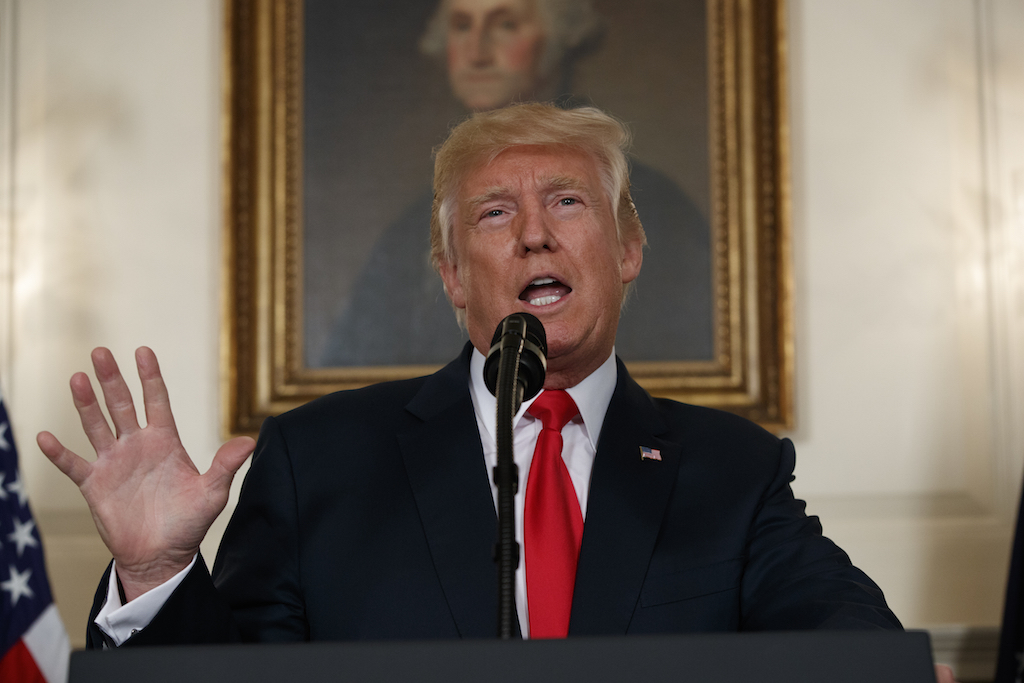 Donald Trump speaks at the White House about the deadly white nationalist rally in Charlottesville, Va. (Evan Vucci / AP)
Donald Trump speaks at the White House about the deadly white nationalist rally in Charlottesville, Va. (Evan Vucci / AP)
After a barrage of criticism from “many sides, many sides,” Donald Trump stepped up to the White House podium on Monday and took another swing at white supremacy. It was clearly a more considered statement than his first one on the Charlottesville tragedy, but he struck out again.
On Saturday, after expressing chagrin that his planned Veterans Affairs announcement was being interrupted, the president said:
I thought I should put out a comment as to what’s going on in Charlottesville. … We’re closely following the terrible events unfolding in Charlottesville, Virginia. We condemn in the strongest possible terms this egregious display of hatred, bigotry and violence on many sides, on many sides. It’s been going on for a long time in our country. Not Donald Trump, not Barack Obama. This has been going on for a long, long time. It has no place in America. What is vital now is a swift restoration of law and order and the protection of innocent lives.
Under tremendous pressure to name “it” and the “sides” in his initial, ambiguous statement, Trump said Monday that he “condemn[s] in the strongest possible terms this egregious display of hatred, bigotry and violence—it has no place in America. … Racism is evil, and those who cause violence in its name are criminals and thugs, including the KKK, neo-Nazis, white supremacists and other hate groups that are repugnant to everything we hold dear as Americans.”
Finally, the president condemned racism by definition and by name. However, there are at least two big problems with Monday’s statement.
First, he continues to frame the problem as though the groups he named can be equated with “other hate groups.” This added phrase is his sop to the “alt-right.” It is his dog whistle to them that he will never isolate them and their racism as the quintessential problem of hatred in America. He offers them the thin cover of being only a part of the problem. He reiterates in new terms his “on many sides” caveat and perpetuates the canard of a moral equivalency between those advocating white supremacy and those counterprotesting for equality.
We should not be fooled by this Bannonesque assertion but must consider it in the context of two previous statements: Saturday’s “many sides” equivocation followed by Sunday’s anonymous White House statement which updated that to “all extremist groups.” By Monday, it was rephrased to “other hate groups.”
On various news shows over the weekend, Trump apologists made it clear that blame for the Charlottesville violence must be allocated to others as well as to the white supremacists. They insisted that left-wingers, anti-fascists and the Black Lives Matter movement were also hate groups (ironically, hating racism makes you a hater, according to Trump-think).
The second problem is that since Trump’s initial, failed response, the rhetorical bar has been raised. The injuries and deaths that occurred in Charlottesville were still being reported as he stood before the nation on Saturday. But he prefaced his Monday statement by saying he had just met with the attorney general and the FBI director, so there was no doubt he had all the information relevant to the weekend’s events. Yet the words “domestic terrorism,” “radical white supremacists” and “terrorist attack” never passed his lips.
He basically referred to the death of Heather Heyer as if it were an accident resulting from the malfunctioning of a self-driving car. He initially omitted her name and described the incident as a “car attack.” Two full minutes went by before he named her and offered condolences to her family and those of two state troopers who died in a helicopter crash while monitoring the protests. But since we all know now that a white supremacist from the rally got in his car and mowed down 21 people, Trump’s failure to call that an act of domestic terrorism is presidential malpractice.
Especially given that his attorney general has already called Saturday’s attack an act of domestic terrorism, Trump’s failure to name it as such can only be explained by his unwillingness to alienate himself from the racist base of his support. In the meantime, history is passing him by. He must fire Steve Bannon and his minions, or he’ll never catch up with history as the alt-right weighs him down in the White House.
His greatest omission of all was that of any sense of context for the events of the past weekend. Let us not forget that this it started on Friday night with a torch-lit procession (not a candlelight march) through Charlottesville’s Emancipation Park to protest the planned removal of the statue of Confederate Gen. Robert E. Lee. The long procession of torches was in itself an act of terrorism in that it was intended to remind the black population of the days when Ku Klux Klan rallies were commonplace and the lynching and burning of black people and communities was the standard tactic of terror in the South.
Then on Saturday, the “Unite the Right” rally was scheduled to kick off at noon. In Trump’s rambling remarks that day, he made sure to cover territory he knew would be pleasing to the ears of his white supremacist base. He said:
We’re proud of our country. We’re proud of who we are, so we want to get the situation straightened out in Charlottesville, and we want to study it. And we want to see what we’re doing wrong as a country where things like this can happen. … We must love each other, respect each other and cherish our history [emphasis added] and our future together. So important. We have to respect each other.
Advocates of the Confederate monuments and flag will tell you they are not racist. They just value their “heritage.” Trump’s initial statement about Charlottesville made sure that his Confederate base did not miss his message of support.
Trump said one true thing on Saturday: “It has been going on for a long time in our country.” He then expressed an intellectual curiosity that is unusual for him. He said, “And we want to study it. And we want to see what we are doing wrong as a country where things like this can happen.” In other words, he is finally going to study American history.
For indeed, white supremacy was the de jure governing philosophy in the 13 colonies and the United States from 1619 to the 1960s. The intellectual and legal foundation of white supremacy, which suffered a mortal wound with the Civil War, did not really begin to be fully dismantled until the civil rights movement and the cumulative impact of court rulings and legislation were meaningfully felt: most notably in 1954 (Brown v. Board of Education), 1964 (federal Civil Rights Act), 1965 (federal Voting Rights Act) and 1968 (federal Fair Housing Act).
Until these rulings and laws, black children in the South grew up in a world that told them they were legally, morally and biologically inferior and told white children that they were legally, morally and biologically superior. The generation born in the mid-1940s (North or South) is now running our country from the boardrooms of Wall Street to the halls of power in Washington. It will take many more generations of people living together in an anti-racist way to purge white supremacy from our land. Witness the fact that many of the alt-righters, neo-Nazis and white supremacists are not just baby boomers but come from every current generation down to the millennials (e.g., Trump senior adviser Stephen Miller).
The struggle for a racism-free society is a battle that must be fought every day. That is why it is important for people of good faith from every race and ethnicity to join together (as they did in Charlottesville) in phalanxes of resistance and counterprotest, any time these anachronistic manifestations of hatred, bigotry and racism raise their head. We owe it to Heather Heyer (who was white) and to all people who have given their lives for freedom to keep on marching until “justice rolls down like water, and righteousness like a mighty stream.”
Your support matters…
Independent journalism is under threat and overshadowed by heavily funded mainstream media.
You can help level the playing field. Become a member.
Your tax-deductible contribution keeps us digging beneath the headlines to give you thought-provoking, investigative reporting and analysis that unearths what's really happening- without compromise.
Give today to support our courageous, independent journalists.
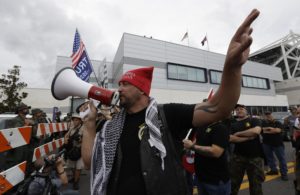

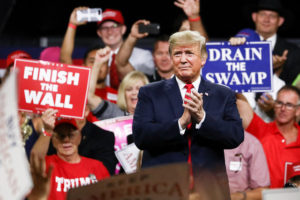
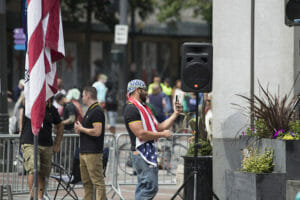
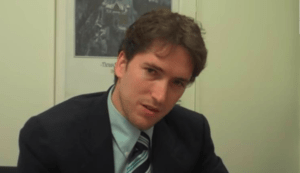
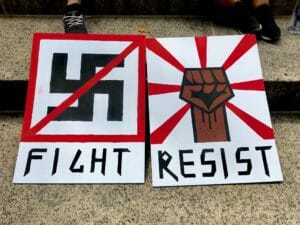
You need to be a supporter to comment.
There are currently no responses to this article.
Be the first to respond.